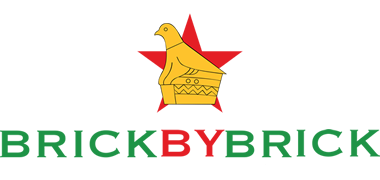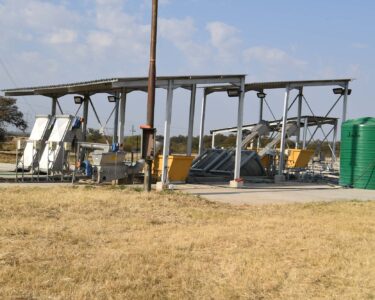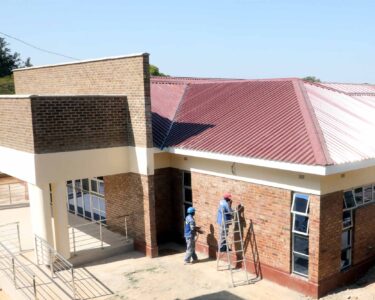There was a time when Green Fuel, which owns the largest ethanol plant in Africa, spent most of its time engaged in running battles with villagers in Chisumbanje. However, as our Editor-in-Chief Munyaradzi Huni reports, Green Fuel has finally got the fuel to oil its relationship with the villagers and is now focusing on its core business. Read on . . .
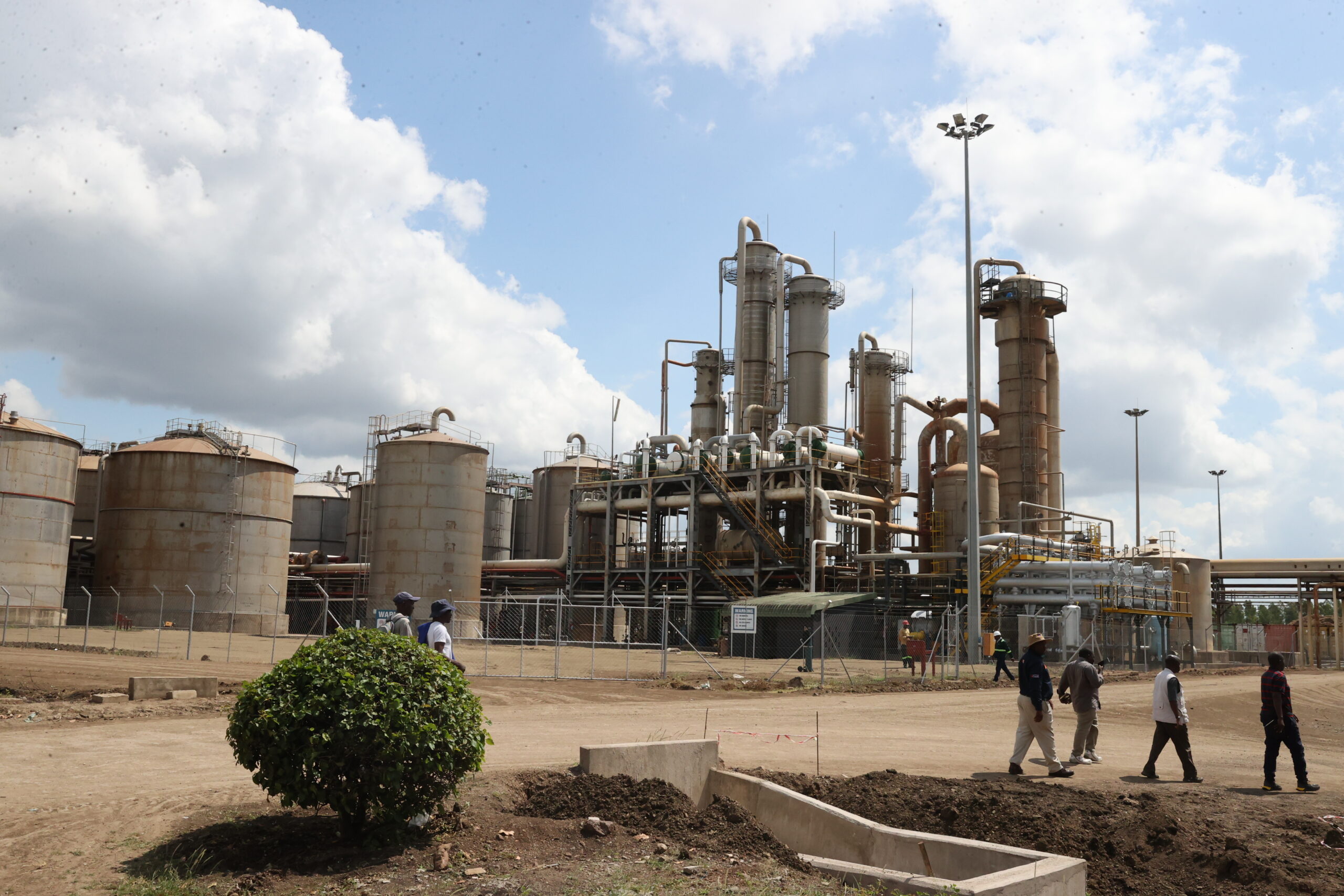
When Green Fuel, now Zimbabwe’s largest ethanol producer, started operations in Chisumbanje, Manicaland Province, in 2011, the local community was up in arms. How could the company grab their land and displace them without any compensation, they fumed? Some advocacy groups seized the opportunity and accused the Billy Rautenbach-owned company of polluting water bodies in the area and failing to pay its workers.
Things got worse for Green Fuel in 2015 when a parliamentary committee compiled a damaging report to the effect that the company had indeed treated the displaced villagers unfairly. Issues to do with the ownership of the company cropped up as Green Fuel was accused of not complying with the country’s 49-51% indigenisation laws in force at the time. As the litany of allegations against the company kept on piling up, it looked as if it was a matter of time before the Green Fuel project collapsed.
The Brick by Brick magazine team recently travelled to Chisumbanje for a tour of the Green Fuel ethanol processing plant and some of its corporate social responsibility projects. To the editorial team’s pleasant surprise, Green Fuel and members of the community are slowly finding each other. Of course, there are still pockets of discontent, mainly fuelled by foreign-funded advocacy groups, but relations between Green Fuel and villagers in Chisumbanje have improved remarkably.
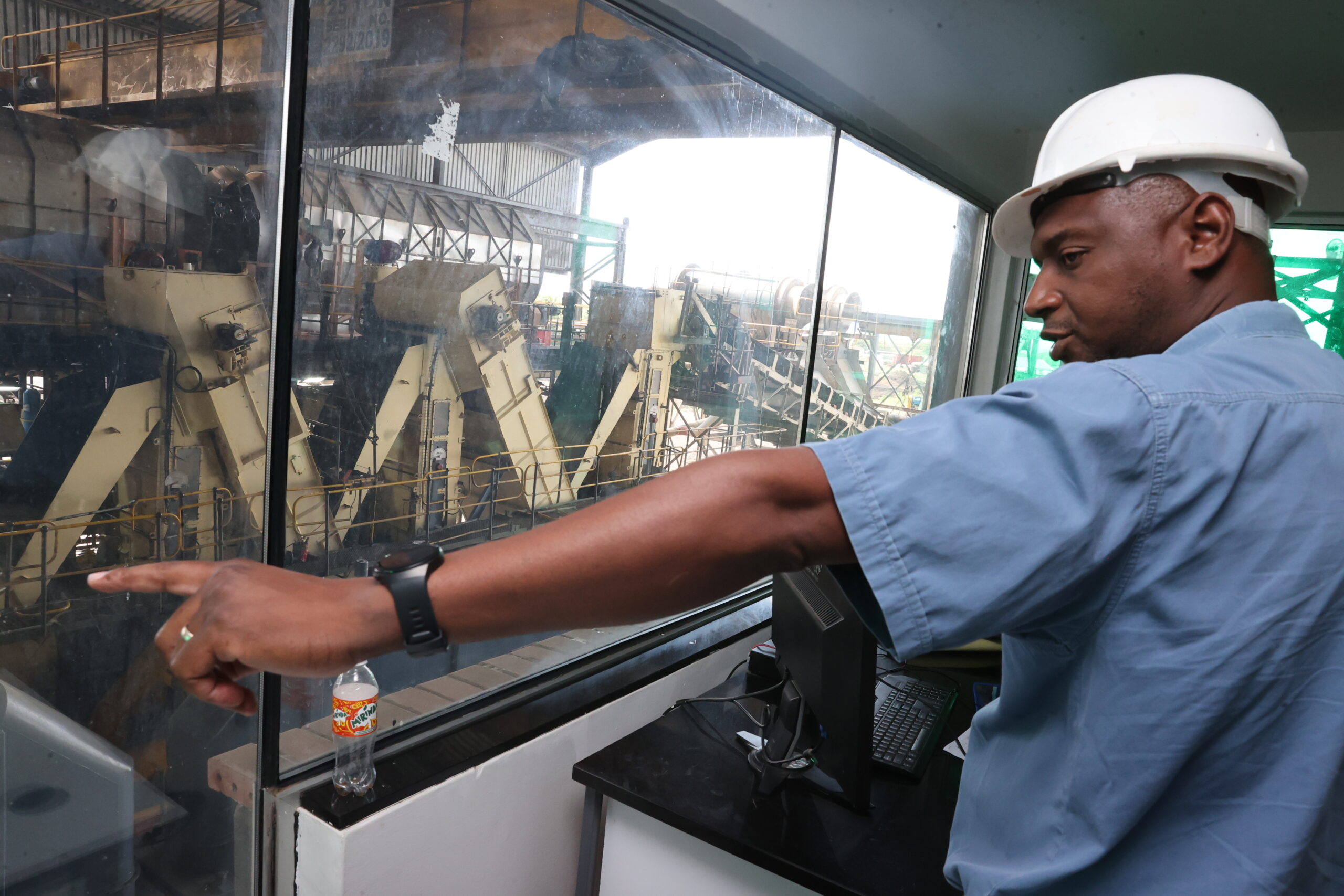
The company has since embarked on expansion projects that are fast transforming the surrounding communities in ways that dovetail with the Second Republic’s drive to industrialise Zimbabwe’s rural areas. Taking a stroll through the company premises, it is difficult to imagine that the area was once considered one of the most marginalised in the country. The running battles with members of the community are now a thing of the past as Green Fuel is now writing, through its works, a positive narrative about ethanol production in Zimbabwe.
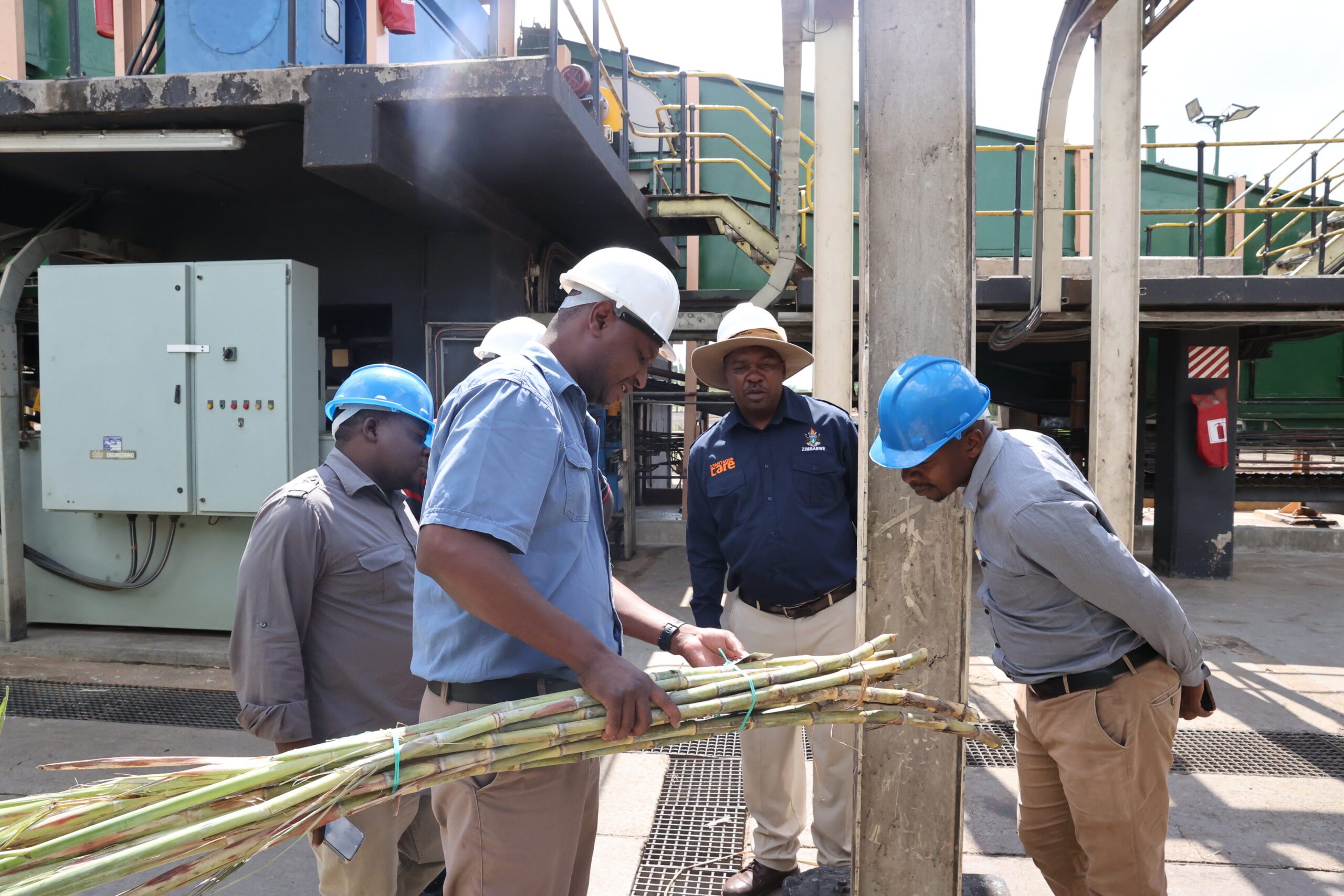
Speaking during the tour of the ethanol plant, the laboratory manager, Aleck Mupariwa, revealed that Green Fuel had plans to put up an additional mill at the plant by next season.
“As Green Fuel we are projecting that next season we want to put up a seventh mill. When we do that we will be able to increase our recovery to 98%. We also have lots of land available and so we are expanding the fields. The more cane we grow, the more capacity we require to process it.
“Last year we crushed 1 million tonnes of cane. For this season we are projecting to crush 1.225 million tonnes. Next year we are targeting 1.4 million tonnes. Last year we produced 75 million litres of ethanol and we are looking at producing 95 million litres this year. After crushing 1.4 million tonnes of cane, our projection is to produce around 120 million litres of ethanol,” said Mupariwa.
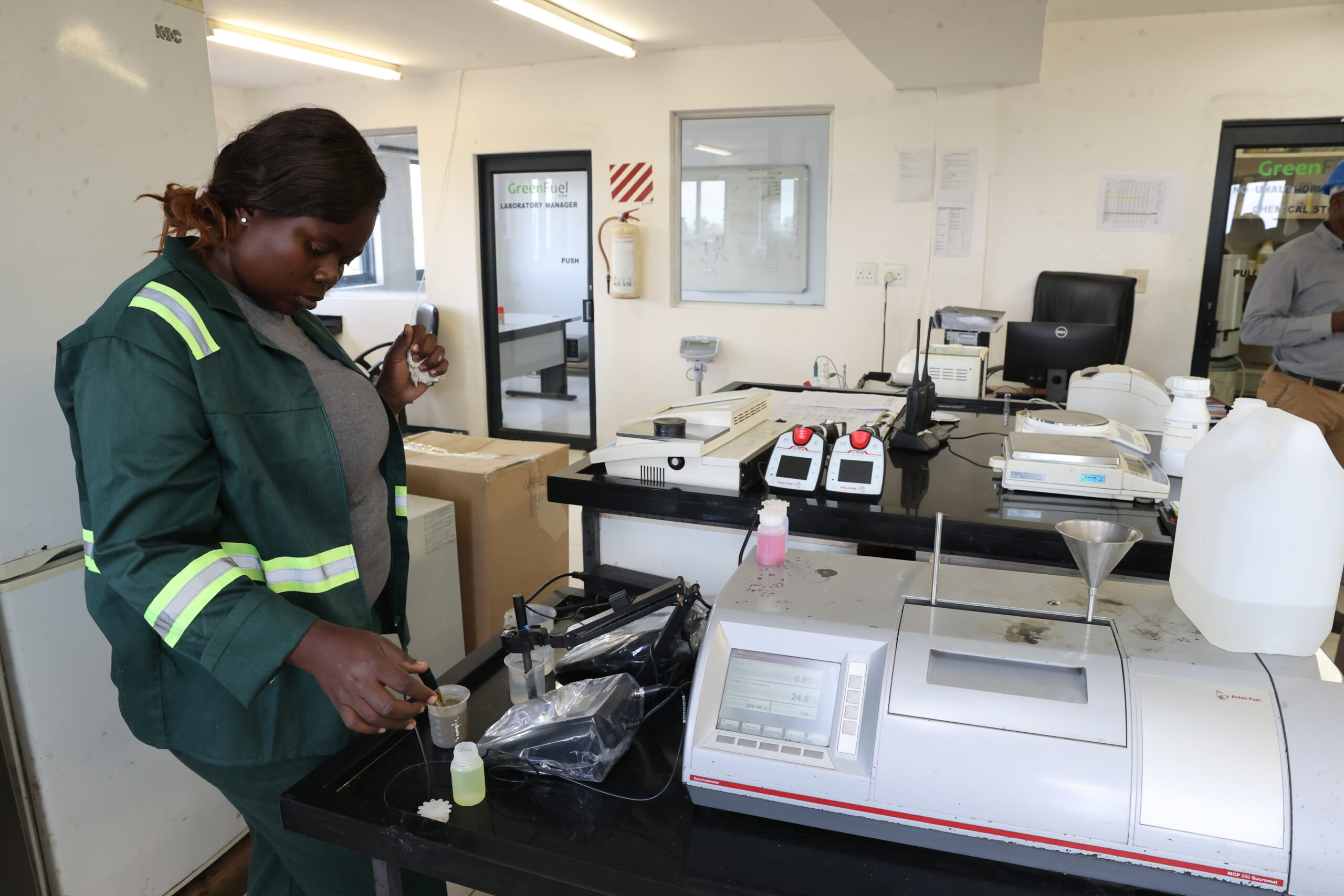
Unpacking the production process, Mupariwa said: “In our land preparations we have got over 12,000 ha of land under cane. We have about 9,300 ha in Chisumbanje and 2,700 in Middle Sabi. Our cane is irrigated all year round and it takes 12 months for it to reach maturity. Our harvesting is highly mechanised, i.e. we have a harvester that does everything mechanically. We do what we call green harvesting to retain the cane’s mulch. Other companies like Triangle burn their cane before harvesting, but we don’t do that. In our case, the cane is harvested straight from the field onto our trucks. It is then chopped into billets by mechanical harvesters before the billets are transported to the plant for ethanol production.
“When the cane comes to the factory, we receive it on the feeder table. From there, it is conveyed to the milling section via a shredder. The shredder is where our cane preparation for milling really starts. On the milling side, we have got a 6-mill tandem. This means the 6 mills are arranged in chronological sequence. Working in tandem, they are capable of extracting 96% of the fermentable sugars.

“When Green Fuel was launched, it had 4 mills. Four soon became 5. Now we have 6. The number of mills has been increasing to boost our recoveries of the cane sugar from about 89% to 96%.
“On average, we crush 6, 000 tonnes of cane per day, producing approximately 480,000 litres of ethanol. From the cane crushing, we obtain 2 inputs – the juice and the fibre. The fibre is used in the boilers as a fuel for steam and power generation. While some boilers are fired by coal, ours are fired by the fibre. Thanks to the fibre’s high combustion qualities, our boilers generate superheated steam – of temperatures as high as 450 degrees Celsius. The generated steam is used to turn the turbines for power generation. Our turbines have the capacity to generate 18 MW, which we use to power the plant and the estate. Excess power goes to the national grid.
“Right now, we are producing 12 MW. For the factory and estate we require about 5 MW. For us to produce the 18 MW, we need to install another set of transformers.
“On the ethanol side, the juice – which contains sugar — is sent to the distillery for fermentation and distillation. The juice is concentrated to mash on the evaporator. Yeast is added to the mash for fermentation. The yeast contains enzymes that promote the conversion of sucrose, fructose and glucose into ethanol.
“It takes 30-35 hours to completely exhaust the sugars. After the 35 hours we get beer with an alcohol content of about 10-12%. This is subsequently concentrated in the distillation section to make fuel grade ethanol.
“Once production gets underway, the process is non-stop. The finished product is sent to our on-site storage tanks which have a capacity of 14.5 million litres. Before dispatch, we add a stabiliser to the ethanol in all the tankers. The ethanol is de-natured by adding a dash of petrol to thwart any temptation to drink it.”
As the man in charge of quality control, Mupariwa assured the motoring public that Green Fuel’s ethanol does not damage vehicle engines.
“We supply our ethanol to local fuel retailers and the public has embraced it. There are allegations that the ethanol damages cars, but no one has come forward with such a complaint. All our own [Green Fuel] petrol cars use it and we are good to go.
“During the Ian Smith era, when Rhodesia was under sanctions, ethanol was quite popular. It worked very well and no one complained. Now that we are doing it ourselves, people start making it appear as if this is a new thing. I have been using ethanol in my car for many years and I haven’t encountered any problems. There is need to change people’s mindset for them to understand that ethanol is safe. Europe is slowly going the ethanol way because it is environmentally friendly. Quite a number of European countries are blending E10 with petrol. In Zimbabwe, we want to maintain E20 for now.”
Green Fuel runs a robust corporate social responsibility under the stewardship of the community projects coordinator, Japhet Chigwenembe. During a tour of some of the projects the company is bankrolling, Chigwenembe said:
“As part of our corporate social responsibility initiative, we have developed partnerships between the company and members of the community.
“Our largest community project is the Chisumbanje Irrigation Project, which boasts slightly over 3,000 direct beneficiaries. Another is Manna Creative Fashions, a group of budding entreprenuers who came together to start a sewing project. We have since contracted them to produce the company’s personal protective equipment (PPEs). Everything that is branded Green Fuel in terms of PPEs comes from Manna Creative Fashions.
“A sister company to Manna Creative Fashions, Dermal Care, specialises in the production of reusable sanitary pads. We are all aware of the challenges that the girl child faces in terms of sanitarywear. As part of social responsibilities, Green Fuel we saw it necessary to mitigate the plight of the girl child.
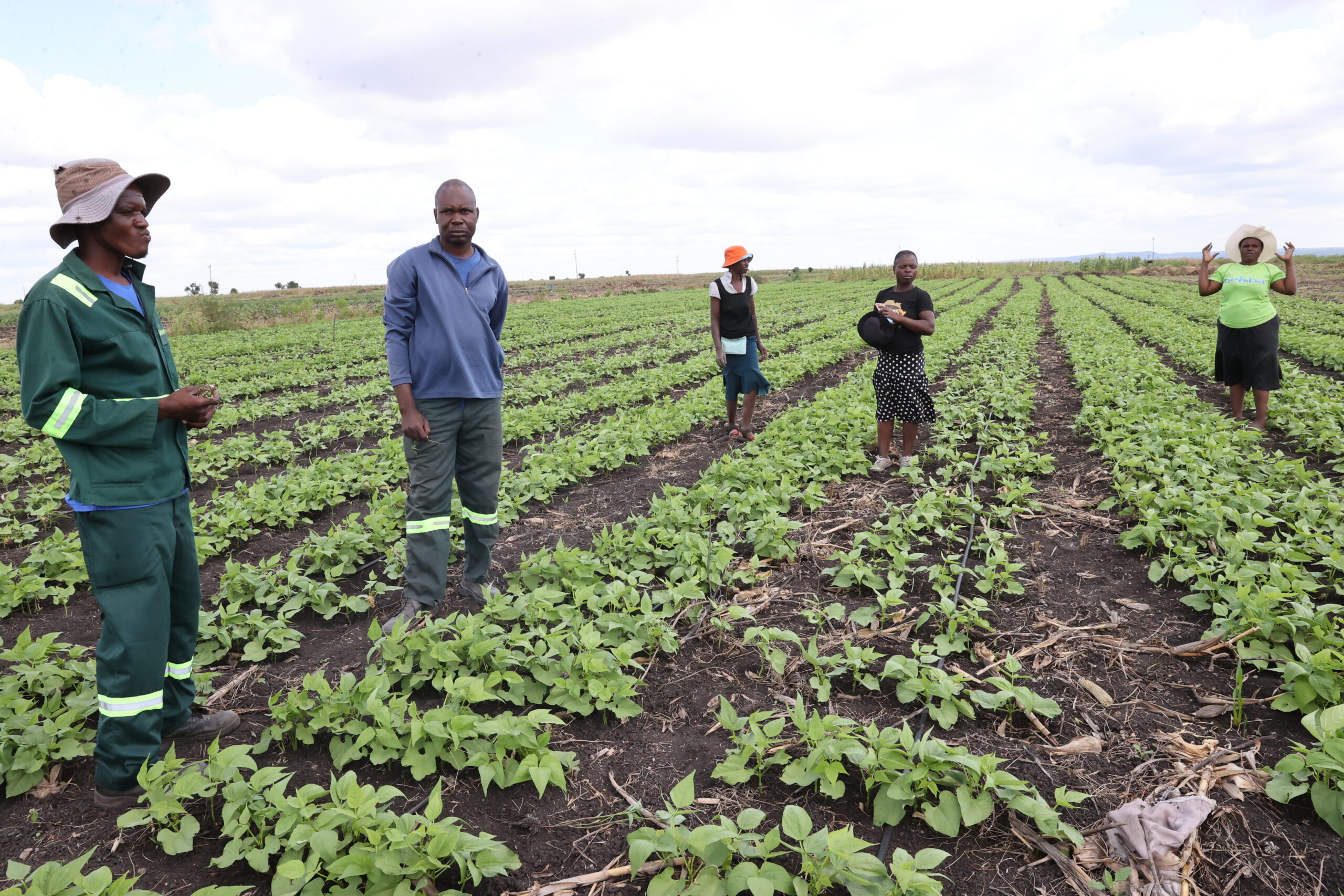
“We also have Blessed Honey Makers, a group of women specialising in the production of 100% organic honey. Then there is Safe Mart Fence Makers, under whose auspices members of the community use recycled tyres to make security fences.
“Green Fuel also funds Community Kitchens, which are responsible for feeding the company’s 3,000-strong workforce. In addition to the above, we have quite a number of projects that are still on the drawing board. One of these is fisheries.
“We fully fund all the projects, but it’s the members who benefit from the proceeds. Our objective is to see to it that the projects are self-sustaining. We want the beneficiaries to wean themselves away from the donor mentality. We have emphasised to the beneficiaries that Green Fuel will not give them money or other resources forever.
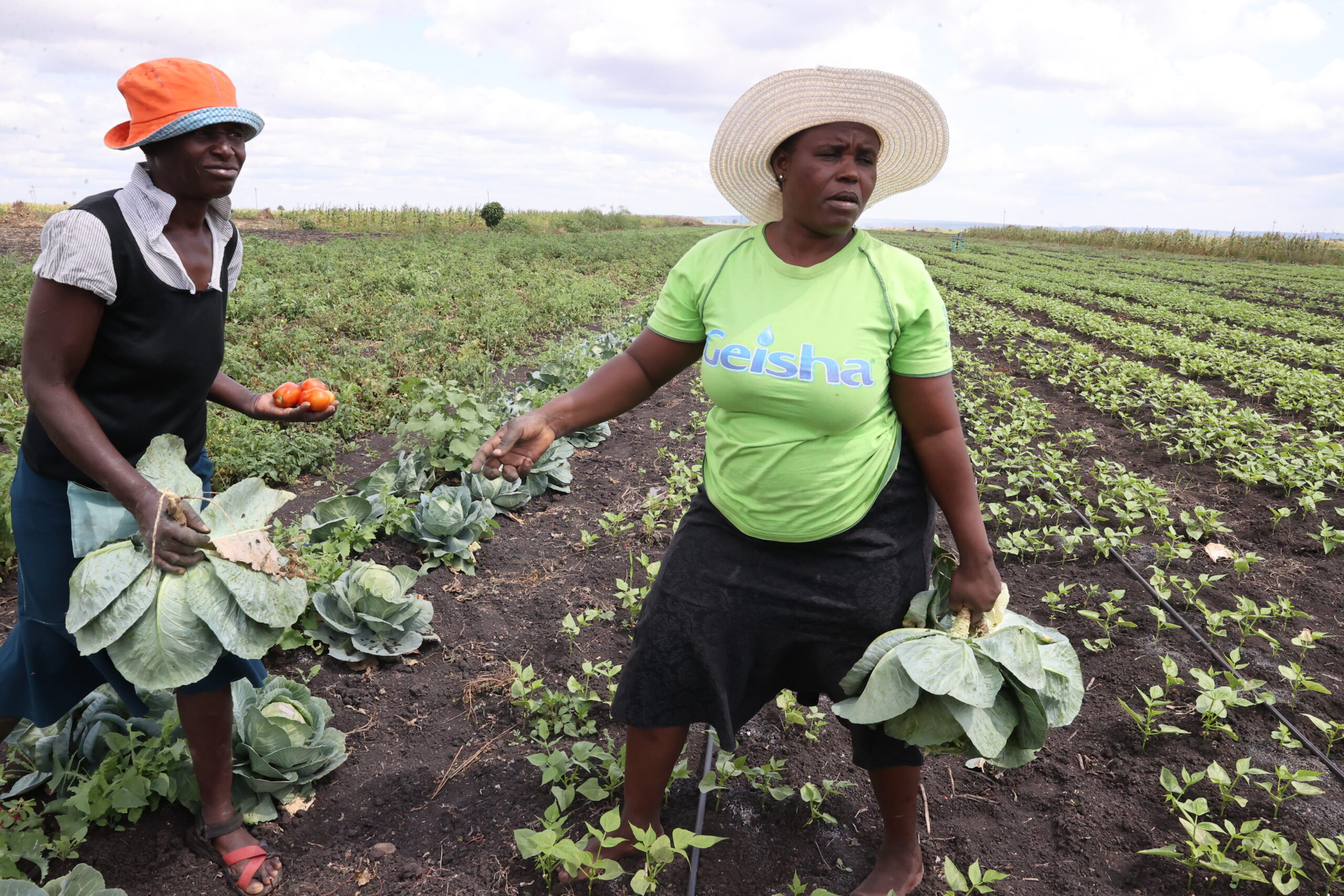
“We provide the beneficiaries with the resources to start a project after which our job is simply to monitor their performance. When the need arises, we provide them with training and refresher courses. This is one way of ensuring that run their projects and grow them without external interference.
“In terms of education, we have internal bursary schemes for our employees under which we pay school fees for some of their children. We also have a University Scholarship Programme which encompasses children from the community. On the other hand, Ramangwana Rakajeka is a bursary scheme that benefits about 100 students.
“We also have a community library that is fully equipped with computers, internet and thousands of books. We are domiciled in a rural area. As such, the library is meant to empower learners in the rural areas. Entry is free.
“Last, but not least, we have a Green Market by Chisumbanje Shopping Centre, which houses about 84 informal traders. Green Fuel is also actively involved in road maintenance in all its surrounding areas.
“These projects have helped us to connect with members of the community. There is continuous engagement with members of the community to ensure all the projects are being run smoothly and sustainably. As a result, villagers in Chisumbanje now feel like they are part of the Green Fuel family and we are now one big happy family.”
With Green Fuel funding so many projects under its corporate social responsibility programme, it looks like the bad blood of yesteryear is now one for the history books. This one big family should be left alone to co-exist because, ultimately, it is Zimbabwe that will benefit through affordable fuel and a reduced fuel import bill.

